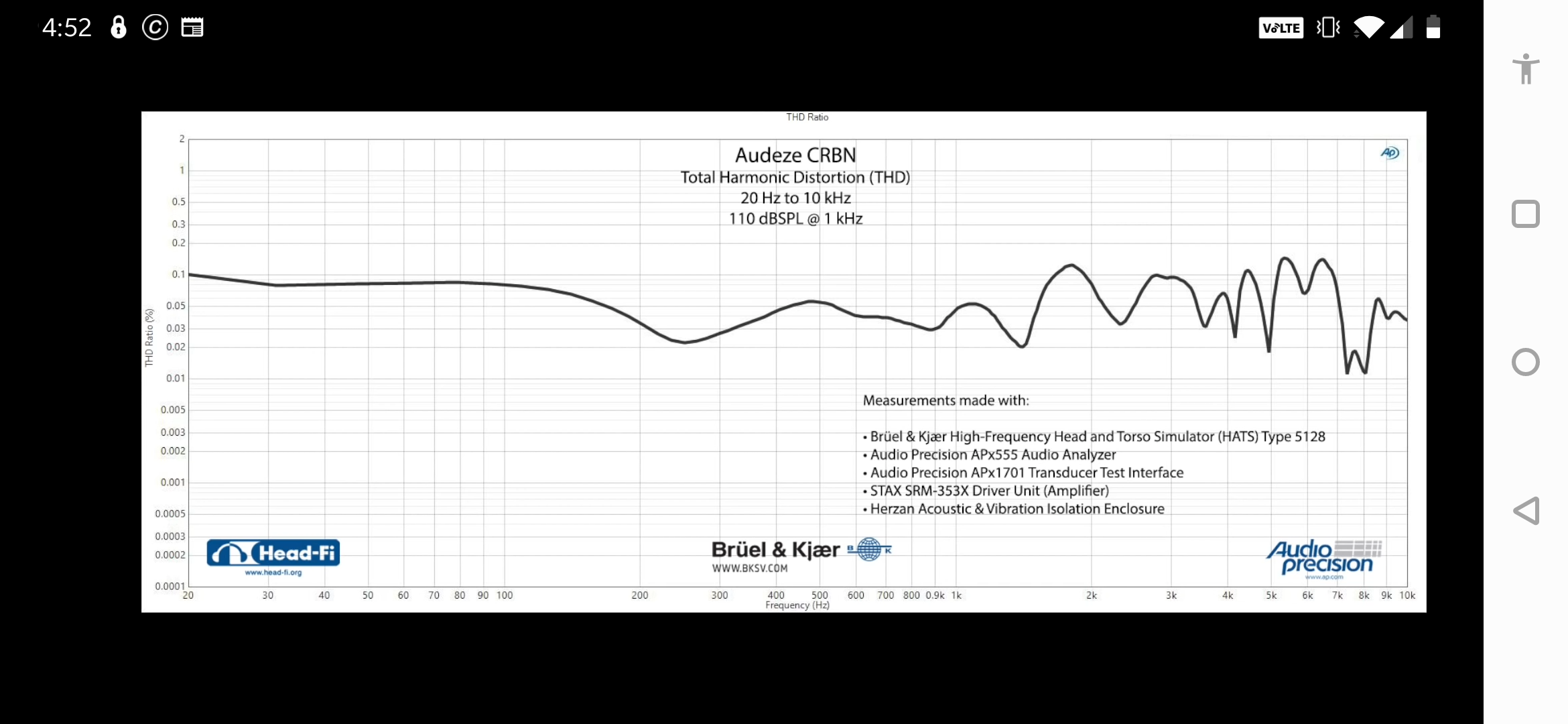As someone who is with Audeze, I avoid providing any strong subjective opinions and try to keep it technical/objective to the extent possible. I will leave subjective opinions to others. My personal preferences affects my perception too. I prefer well controlled, well extended, tight and fast bass with good bass texture and I will take that over hard hitting bass. Many headphones have a underdamped bass with resonance near 40-60hz, that gives the perception of better bass slam, but it is not natural in my books. There are characteristic qualities associated with each technology (Dynamics, Planar, Ribbon, Estats) these are controlled by the underlying physics and so it is not possible to make a headphone sound like it was using a different technology and neither is that our goal. Our hope is to try an improve what is possible within each category.
Some background behind bass as it relates to CRBN design:
By controlling the amount of carbon nanotubes in the diaphragm, a we achieve high efficiency by allowing it to hold more charge at the same time keeping the resistivity high enough to prevent charge migration (which will cause distortion) especially at low frequencies.
The high efficiency of the carbon nanotube diaphragm also allowed us to reduce the tension just enough to increase the space between the stator and diaphragm to allow higher excursion with lower diaphragm resonance frequency, without the risk of the diaphragm coming into contact with the stator. The low resonance frequency of the diaphragm combined with the large area makes for great bass response. The bass response is further improved by carefully chosen acoustically transparent damping material that not only provides dust protection but also damps the diaphragm to provide smooth bass response. Having experience designing planar headphones with good seal to provide great bass response, we improved the bass response further by carefully designed earpads that provide the necessary seal.
Imaging, speed, high frequency extension...
We chose an optimal diaphragm and stator size that is large enough to provide excellent imaging without compromising on high frequency extension due to capacitance. The perforation on the stator (with more than 50% open) was also optimized to provide excellent high frequency extension and sounding open without compromising efficiency. The lighter than air carbon nanotube infused diaphragm has naturally low inertia that allows the diaphragm to accelerate fast. We employ edge damping to further eliminate distortion and smooth the frequency and phase response.
The stators use a proprietary PCB manufacturing technique that allows us to achieve high rigidity with uniform thickness and flatness. and the Conductive surface of the stator is coated to ensure high dielectric strength. A rigid stator of uniform thickness is important to achieve uniform force distribution and for a linear response.


















![20230302_215055[1].jpg](https://cdn.head-fi.org/a/12001428_thumb.jpg)






















